#wordpress and shopify integration
Explore tagged Tumblr posts
Text
0 notes
Text
Planning to sell physical or digital products online and want to create a website for it in the FASTEST way?
If you're starting your e-commerce journey and feeling overwhelmed by all the platform options—don't worry, you're not alone. Two names dominate the conversation: Shopify and WordPress (with WooCommerce).
But which one is truly better for newbies, beginners, and dropshippers looking to launch fast and sell efficiently?
Let’s break it down and get straight to the point—especially if you're here to build a business, not fiddle with tech headaches.
Shopify: Built for E-Commerce from the Ground Up
Shopify is a dedicated e-commerce platform. That means everything from product setup to payments, themes, and shipping is purpose-built for one thing: selling online.
Why Shopify is Great for Beginners
Zero Coding Required: Just drag, drop, and start selling. Perfect for people who want results, not tutorials.
3-Day Free Trial: You can start today and be up and running in hours.
Sign up for Shopify’s FREE trial with this link -
https://shopify.pxf.io/QjzmOa
Fast Setup: No plugins, no server setup, no manual installation. Just sign up and start building.
Designed for Dropshipping: Integrates easily with apps like DSers, Zendrop, CJdropshipping, and more.
Mobile-Optimized: Your store will look great on any device—without touching a line of code.
24/7 Support: Real-time help from actual people when you get stuck.
Sign up for a Shopify FREE TRIAL Here at https://shopify.pxf.io/QjzmOa
WordPress (WooCommerce): Powerful, But Not Beginner-Friendly
WordPress is an amazing platform... if you're building a blog or you’re already experienced with web development. But for e-commerce newbies, it can feel like you're building a house from scratch.
Why WordPress Might Be a Struggle for Beginners
Complex Setup: You'll need to buy hosting, install WordPress, then install WooCommerce, then configure it all manually.
Plugin Overload: Want a feature? You’ll likely need to install a plugin. And another. And another. Then update them constantly.
Security Risks: If you don’t stay on top of updates and patches, your site could be vulnerable.
Slow Support: There’s no dedicated support team—just forums or your hosting provider.
Not Built for E-commerce First: WordPress is a blogging tool at heart.
WooCommerce makes it work for selling, but it’s not seamless.
So Which One Should You Choose?
If you're:
A beginner with no coding experience,
A dropshipper who wants fast supplier integration,
Or just someone who wants to get your first product online this week, not next month...
Go with Shopify.
It’s clean, easy to use, beginner-friendly, and built to sell. You won’t waste time on tech issues—you’ll spend time building a brand.
Pro Tip: You can start with a 3-day free trial and see how easy it is. No risk, no commitment.
Sign up for a Shopify FREE TRIAL Here - https://shopify.pxf.io/QjzmOa
Manual Setup
Shopify was made for people just like you—dreamers and doers ready to launch something real.
Don’t get stuck in tech setup and plugin chaos.
2 notes
·
View notes
Text
🚀 Selecting the Right HubSpot Integrations for Your Business! 🔗✨
Your business deserves a seamless, efficient, and scalable workflow! The right HubSpot integrations can help you automate tasks, nurture leads, track customer interactions, and boost marketing efforts all in one place. But how do you choose the best ones? 🤔
💡 Here’s your guide to picking the perfect integrations:
✅ Identify Your Needs: Do you need better CRM management, automated emails, or social media tracking? Define your priorities first! 🎯
✅ Check Compatibility: Ensure your existing tools whether it’s Shopify, Salesforce, Slack, or WordPress integrate smoothly with HubSpot. 🔄
✅ Look for Automation & Scalability: Choose integrations that reduce manual effort and grow with your business. 🚀
✅ Read Reviews & Test First: Customer feedback and free trials will help you avoid costly mistakes. ⭐
Pro Tip: The HubSpot App Marketplace has hundreds of integrations, from email marketing to analytics—explore your options!
2 notes
·
View notes
Text

Step-by-Step Guide to Selling Digital Products with Ease
The digital economy is booming, and selling digital products—like eBooks, courses, templates, or printables—has never been more accessible. With low startup costs and limitless scalability, it’s an ideal venture for creators and entrepreneurs. Here’s how to start your journey effortlessly:
1. Identify Your Niche & Audience
Begin by pinpointing a niche you’re passionate about and that has demand. Research communities on social media, forums, or platforms like Reddit to understand pain points. For example, if you’re skilled at graphic design, consider offering Canva templates for small businesses. Narrowing your focus helps you stand out.
2. Validate Your Idea
Before investing time, validate demand. Use surveys, polls, or pre-sale offers to gauge interest. Share a concept on Instagram or LinkedIn and ask followers if they’d buy it. Tools like Google Forms or Gumroad’s pre-order feature can simplify this step.
3. Create Your Product
Focus on quality and usability. Use tools like Canva for design, Teachable for courses, or Adobe Audition for audio guides. Keep it simple—start with one product (e.g., a PDF workbook) before expanding. Ensure it’s professionally presented and solves a specific problem.
4. Choose a User-Friendly Platform
Select a platform that handles hosting and sales. Options like Gumroad, Ko-fi, or Etsy are beginner-friendly. For more control, use Shopify or WordPress with WooCommerce. Prioritize platforms with built-in marketing tools and analytics.
5. Set Up Payments & Pricing
Integrate secure payment gateways like Stripe or PayPal. Price your product strategically: research competitors, consider value-based pricing (e.g., $29 for a time-saving template bundle), or offer tiered options (basic vs. premium).
6. Launch & Market Smartly
Build anticipation before launching. Share snippets on social media, collaborate with micro-influencers, or offer limited-time discounts. Use email lists (start with free lead magnets) and SEO-friendly product descriptions to drive organic traffic.
7. Prioritize Customer Support
Automate delivery using platforms like SendOwl to avoid manual work. Create a FAQ section and respond promptly to queries. Positive reviews boost credibility, so encourage feedback with follow-up emails.
8. Analyze & Scale
Track sales and customer behavior with analytics tools. Identify top-performing marketing channels and double down. Expand your offerings based on demand—turn a popular eBook into a video course, or bundle products for upsells.
Final Thoughts
Selling digital products is a rewarding way to monetize your skills. By starting small, validating ideas, and leveraging the right tools, you can build a sustainable online business with minimal friction. Ready to launch? Your audience is waiting!
Take the first step today—create, share, and grow. The digital world is yours to conquer.
(Word count: 500)
This guide balances actionable steps with encouragement, ensuring readers feel empowered to start their digital product journey without overwhelm. Each section is concise, with practical examples to inspire immediate action.
#explore#digital marketing#digital product#selling#Sell digital products#Digital product creation#Online business ideas#Passive income strategies#Niche research#Audience validation#Low startup costs#Digital product platforms (e.g.#Gumroad#Etsy#Shopify)#Value-based pricing#Email list building#Social media marketing#SEO-friendly content#Customer support automation
2 notes
·
View notes
Text
10 Steps to Launch Your Dream Business Online Successfully

In today’s digital era, businesses thrive online as more consumers prefer shopping and engaging with brands virtually. To succeed in this competitive space, you must establish a strong online presence and build a brand that stands out. If you’re ready to start your dream business online, this guide will walk you through the essential 10 steps to launch successfully.
Step 1: Define Your Business Idea
Start by clearly defining your business concept. Identify your target audience, the products or services you will offer, and what makes your brand unique. Your unique value proposition (UVP) should set your business apart and address a specific customer need or pain point.
Step 2: Conduct Market Research
Research your industry, competitors, and customer preferences. Understanding market demand will help you tailor your offerings. Analyze competitors’ strengths and weaknesses to identify gaps in the market that your business can fill. Engage with similar businesses to gain insights and advice.
Step 3: Create a Business Plan
A well-structured business plan outlines your goals, marketing strategies, financial projections, and operational structure. This roadmap guides you through launching and scaling your business. If you seek funding, investors will require a solid business plan detailing startup costs, revenue forecasts, and growth strategies.
Step 4: Choose a Memorable Domain Name
Your domain name should align with your brand, be easy to remember, and represent your business niche. Ensure it is available and register it with a trusted domain provider. A strong domain reinforces brand identity and improves searchability.
Step 5: Build a Professional Website
A user-friendly, visually appealing website is essential for credibility. Platforms like WordPress, Shopify, or Squarespace offer easy-to-use website builders. If budget allows, consider hiring a web designer to create a custom site that reflects your brand’s professionalism.
Step 6: Develop a Strong Online Presence
Implement SEO strategies, content marketing, and social media engagement to grow your visibility. Utilize platforms like Instagram, LinkedIn, and Facebook to connect with potential customers. Create valuable content to attract and retain visitors.
Step 7: Set Up E-Commerce Capabilities
If selling products or services, integrate a secure e-commerce platform. Ensure a smooth checkout experience, reliable payment gateways, and efficient order processing. Platforms like Shopify, WooCommerce, or BigCommerce offer robust e-commerce features.
Step 8: Establish a Brand Identity
Your brand identity includes a logo, color scheme, and consistent design elements across all platforms. A cohesive brand image builds trust and recognition. Apply branding across your website, marketing materials, and social media.
Step 9: Build a Customer Base
Engage with potential customers through email marketing, loyalty programs, and referral incentives. Provide exceptional customer service to build long-term relationships. Word-of-mouth marketing can be a powerful tool in expanding your audience.
Step 10: Monitor, Evaluate, and Adapt
Use analytics tools to track performance. Regularly review customer feedback, sales trends, and engagement metrics to make data-driven improvements. Adapt your strategies to enhance customer experience and business growth.
By following these steps, you can successfully launch and grow a thriving online business that stands out in the digital marketplace.
2 notes
·
View notes
Text
Expert E-Commerce Website Development In USA
In today's digital landscape, establishing a robust online presence is crucial for business success. Kushel Digi offers custom eCommerce development services designed to drive growth and enhance customer experience. By leveraging the latest technologies, they ensure the creation of seamless and scalable online stores tailored to meet the unique goals of modern businesses.
Comprehensive E-Commerce Services
Kushel Digi provides a wide array of services to cater to diverse business needs:
Custom E-Commerce Development: They deliver tailored solutions, building scalable online stores with strong platform architecture and personalized features.
Store Design & Development: Focusing on excellent website design, they create user-centric layouts coupled with high-performance development, offering customizable designs that align with your brand identity.
Platform Migration: Simplifying the transition process, they offer data migration support and smooth process integration, ensuring minimal downtime during platform changes.
Third-Party Integration: Enhancing efficiency through simplified API integrations, they connect CRM & ERP systems and implement secure payment gateway solutions.
Mobile E-Commerce Solutions: Recognizing the importance of mobile commerce, they develop mobile-optimized stores with responsive designs, ensuring cross-platform compatibility for an excellent shopping experience.
E-Commerce SEO & Optimization: Implementing on-page SEO best practices, they focus on site speed improvements and enhanced search visibility to increase conversion rates.
Proven Success Stories
Kushel Digi's expertise is reflected in their successful projects:
Black Rhino Concealment: Achieved a 35% increase in sales, a 22% improvement in average page speed, and a 40% boost in revenue.
KICK-EEZ: Experienced a 35% rise in sales, a 22% enhancement in average page speed, and a 40% increase in revenue.
Sights & Scopes: Saw an 80% growth in sales, a 120% surge in conversion rate, and a 140% uplift in order value.
Slides 365: Noted an 80% increase in sales, a 120% improvement in conversion rate, and a 140% rise in order value.
Leveraging Leading E-Commerce Technologies
Kushel Digi utilizes top eCommerce platforms to build robust online stores:
Shopify: An all-in-one platform simplifying online business operations and offering seamless shopping experiences.
Magento: Known for its flexibility, it allows businesses to unlock extensive customization features, ideal for medium to large enterprises.
BigCommerce: Offers scalable solutions supporting multi-channel selling, secure transactions, and customizable designs, making it suitable for reaching a global audience.
WooCommerce: Transforms WordPress sites into fully functional online stores with user-friendly interfaces.
Commitment to Client Success
Kushel Digi is dedicated to providing custom eCommerce development services that not only drive growth but also enhance the customer experience. By utilizing the latest technologies, they ensure the creation of seamless and scalable online stores tailored to meet the unique goals of modern businesses.
Embarking on your eCommerce journey with Kushel Digi means partnering with a team committed to your business's growth and success. Their comprehensive services and proven track record make them a trusted choice for businesses aiming to establish or enhance their online presence.
Visit more :- https://www.kusheldigi.us/
#Custom eCommerce Development#Store Design & Development#Platform Migration#Mobile eCommerce Solutions
2 notes
·
View notes
Text
Best Web Design and Hosting for Small Business
User experience (UX) is a top priority for a successful small company website. This features responsive layouts that guarantee smooth surfing across devices, clear information hierarchy, and easy navigation. Websites should captivate users with eye-catching graphics, excellent photos, and interactive features that are consistent with the brand's identity. For small businesses looking to establish a strong online presence, investing in quality web design and reliable hosting is paramount.
Creating a powerful brand identity is essential. In order to create a unified image that makes an impression on visitors, this entails using logos, colors, and font consistently throughout the website. Retaining user interest also requires interesting material that speaks to the demands of the target audience, including educational blog entries and captivating product descriptions.
How to Make a Website for a Small Business
Select a User-Friendly Website Builder: Website construction is made easier by the intuitive interfaces of platforms like as Squarespace, Shopify, and Wix. Because these builders frequently have drag-and-drop capabilities, consumers can alter their websites without knowing any code23.
Choose a Domain Name and Register It
A memorable domain name is crucial for internet branding and represents your company's identity. Make sure it is pertinent to your services and simple to spell.
Select a Trustworthy Web Hosting Provider
The performance of the website depends on the hosting provider selection. Important things to think about are:
Uptime Promise: To reduce downtime, look for hosts that have 99.9% uptime.
Loading Speed: To improve user experience, try to keep page load times under three seconds.
Features of Security: To safeguard your site2, be sure the server offers SSL certificates, frequent backups, and virus detection.
Customer service: For prompt problem solving, round-the-clock assistance can be essential.
Create the Visual Identity for Your Website
Make an eye-catching layout that complements the style of your brand. Make use of top-notch photos and keep design components consistent.
Plan the Navigation and Site Structure
Logically arrange your information to make it easier to navigate. A site with a clear structure makes it easier for people to find information fast.
Create Key Pages
Home, About Us, Services/Products, Blog, and Contact Us are all important pages. Every page should contribute to the general objectives of the website while fulfilling a distinct function.
Top Web Design Platforms for Small Businesses
WordPress:
Flexible and customizable with thousands of plugins and themes.
Ideal for businesses looking for scalability and SEO features.
Wix:
Drag-and-drop functionality for easy website creation.
Suitable for businesses without technical expertise.
Squarespace:
Modern templates and built-in e-commerce features.
Perfect for visually appealing designs.
Shopify:
Best for small businesses focused on e-commerce.
Features include inventory management, payment integration, and analytics.
Weebly:
Affordable and user-friendly.
Ideal for small businesses needing basic functionality.

#Best Web Design and Hosting for Small Business#website#website design#seo services#digital marketing#web design#web development#usa news#usa
3 notes
·
View notes
Text
👉 Neuro Review ✅ Features, Pricing, Bonuses, Discount and OTOs 🚀

🧠 Overview
Neuro Review is a cutting-edge AI-powered tool designed to simplify content creation, video editing, and marketing efforts by leveraging advanced automation and analytics. Perfect for marketers, content creators, and small business owners. 🚀
👉 Click Here for Get Instant Access Neuro 🖰 >>


👉 Click Here for Get Instant Access Neuro 🖰 >>
✨ Features of Neuro Review
AI-Powered Content Creation 🖋️ Automatically generates high-quality, SEO-friendly articles, product reviews, and blog posts.
Video Review Editor 🎥 Create and edit product review videos with ease using templates and AI assistance.
Voiceover Generator 🎙️ AI-powered voiceovers in multiple languages and accents.
Analytics Dashboard 📊 Track performance metrics like views, engagement, and conversions.
Integration Capabilities 🔗 Works seamlessly with platforms like WordPress, Shopify, and YouTube.
Multilingual Support 🌍 Expand your reach with content and videos in multiple languages.
User-Friendly Interface 😌 Intuitive and beginner-friendly design to save time and effort.
💲 Pricing
Front-End Plan: Starts at $47 one-time. Includes core features like content creation and video editing.
OTO 1: Pro Version 🚀: Price: $97 one-time Unlock advanced features like unlimited projects, premium templates, and analytics.
OTO 2: Agency License 🏢: Price: $197 one-time Offers agency rights, client management tools, and bulk project handling.
OTO 3: Reseller License 🔁: Price: $297-$497 Allows you to sell the tool and keep 100% of the profits.
👉 Click Here for Get Instant Access Neuro 🖰 >>
🎁 Bonuses
When purchasing Neuro Review through promotional links, you may receive:
Exclusive Training Videos 📚 Master the platform and its features with detailed tutorials.
Content Marketing Toolkit 🛠️ E-books and resources to enhance your marketing strategy.
Custom Templates 🖼️ Unique designs for faster project completion.
Lifetime Updates 🔄 Stay ahead with the latest features at no extra cost.

👉 Click Here for Get Instant Access Neuro 🖰 >>
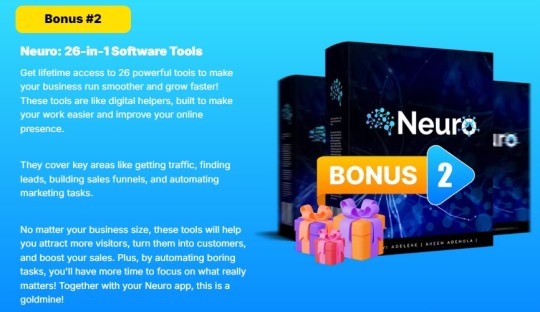
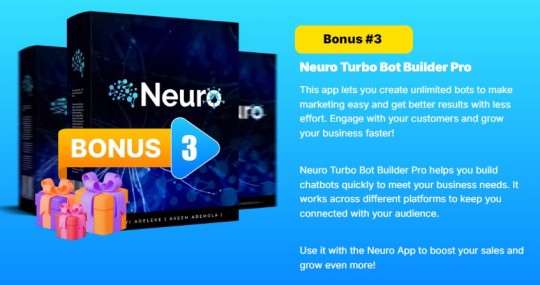
👉 Click Here for Get Instant Access Neuro 🖰 >>
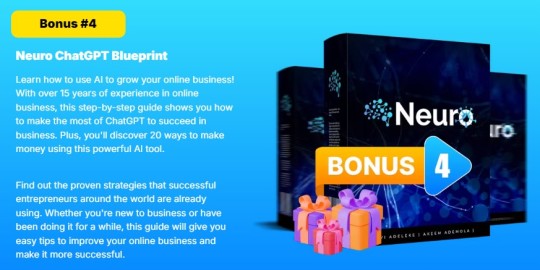
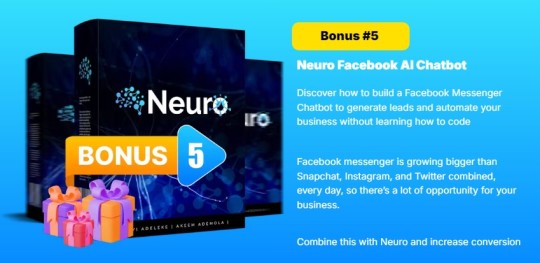
👉 Click Here for Get Instant Access Neuro 🖰 >>
🔥 Discounts and Special Deals
Early Bird Offer: Get 20% off during the launch week.
Bundle Discount: Save up to 30% by purchasing the full OTO package.
Use Coupon Code: 30% Off Cyber Monday Offer For The First 25 People!
🚀 Why Choose Neuro Review?
Saves time with automation.
Boosts productivity and engagement.
Offers versatility with content and video creation tools.
👉 Click Here for Get Instant Access Neuro 🖰 >>
💬 Final Thoughts
Neuro Review is an excellent choice for anyone looking to streamline content and video marketing efforts. With its advanced features and competitive pricing, it's a must-have tool for modern marketers. 🌟

👉 Click Here for Get Instant Access Neuro 🖰 >>
Frequently Asked Questions!
Q. Do I need any experience to get started?
None, all you need is just an internet connection.
And you’re good to go
Q. Do I need to purchase anything else for it to work?
Nop, Neuro is the complete thing.
You get everything you need to make it work. Nothing is left behind.
Q. Is there any monthly cost?
Depends, If you act now, NONE.
But if you wait, you might end up paying $997/mo
It’s up to you.
Q. How long does it take to make money?
Our average member made their first sale the same day they got access to Neuro.
Q. What if I failed?
While that is unlikely, we removed all the risk for you.
If you tried Neuro and failed, we will refund you every cent you paid
Q. How can I get started?
Awesome, I like your excitement, All you have to do is click any of the buy buttons on the page and secure your copy of Neuro at a one-time fee
👉 Click Here for Get Instant Access Neuro 🖰 >>
#apollo neuro review#apollo neuro#neuro review#review#nclex neuro review#apollo neuro reviews#apollo neuro device#neuro#neuro nclex review#brooks neuro review#reviews apollo neuro#reviews#reviews of apollo neuro#apollo neuro review reddit#apollo neuroscience review#nclex review neuro disorders#neuro disorders nclex review#apollo review#neurogum review#apollo neuro review: hrv training with vibration#apollo neuro band#board review#nclex review#marketing#affiliatemarketing#onlinemarketing#software#preview#digitalmarketing
2 notes
·
View notes
Text
Understanding the Difference Between a Website and a Web Page: A Complete Guide
Understanding the Difference Between a Website and a Web Page: A Complete Guide
In today’s digital landscape, terms like website and web page are used interchangeably, often causing confusion among businesses and individuals seeking an online presence. However, as a business owner or a digital marketer, understanding the difference is essential for creating an impactful online strategy.
At KSoft Technologies, where we specialize in website development, digital marketing, and SEO services, we often encounter this question from clients. This guide not only simplifies the distinction between a website and a web page but also explores their technical aspects and how they align with your business goals.
What is a Website?
A website is a collection of interlinked web pages hosted under a single domain name, designed to serve a specific purpose. Think of it as a digital storefront or an online hub that provides a comprehensive experience to users. Websites can vary significantly based on their type and functionality:
Corporate Websites Ideal for businesses aiming to showcase their products, services, and achievements. For example, the KSoft Technologies website highlights our expertise in areas like SEO, app development, and web design.
E-Commerce Websites Platforms like Amazon or Shopify allow businesses to sell products directly to customers. These websites integrate payment gateways, inventory management systems, and customer service functionalities.
Portfolio Websites Focused on showcasing individual or business achievements, these websites are ideal for freelancers or creative professionals.
Landing Pages Dedicated pages within a website that focus on lead generation and conversions, often used in digital marketing campaigns.
Blogs and Forums Content-centric websites aimed at providing information, engaging with communities, or building authority in a niche.
Technical Structure of a Website
A website comprises:
Domain Name: The unique address users type in to access the site (e.g., ksofttechnologies.com).
Hosting Server: Where all the data and files of the website are stored.
Content Management System (CMS): Tools like WordPress or Joomla that allow users to create and manage content.
Backend and Frontend: The backend involves server-side scripting (e.g., PHP, Python), while the frontend includes design elements (e.g., HTML, CSS, JavaScript).
What is a Web Page?
A web page is a single document within a website, identifiable by its unique URL. For example, on ksofttechnologies.com, the “Contact Us” page or “Services” page is a web page.
Types of Web Pages
Static Pages Content remains the same unless manually updated. They’re ideal for information like company profiles or mission statements.
Dynamic Pages Content is fetched from a database and changes based on user interaction. Examples include dashboards or search results pages.
Landing Pages Specifically designed for marketing campaigns, focusing on a single product, service, or call to action.
Blog Posts Individual articles or write-ups focused on specific topics within a blog section of a website.
Technical Structure of a Web Page
Each web page includes:
URL Structure: For example, https://ksofttechnologies.com/services.
HTML Markup: Defines the structure and content of the page.
CSS and JavaScript: For styling and functionality.
Metadata: Helps search engines understand the page content.
Key Differences Between a Website and a Web Page
Definition
Website: A collection of multiple interlinked web pages.
Web Page: A single document within a website.
Scope
Website: Broader; provides comprehensive information or services.
Web Page: Narrower; focuses on a specific topic or purpose.
URL
Website: Main domain name (e.g., ksofttechnologies.com).
Web Page: A subset URL (e.g., /services, /about-us).
Interactivity
Website: Enables complex user interactions.
Web Page: May have limited or single-point interactions.
Purpose
Website: Serves as the entire digital presence.
Web Page: Addresses a specific intent or question.
How Websites and Web Pages Work Together
To draw an analogy, a website is like a library, while web pages are the individual books or chapters within it. Each web page serves a specific purpose and contributes to the overall functionality of the website.
Example from KSoft Technologies
Website Level: Visitors land on ksofttechnologies.com, where they see an overview of our services like web development, app design, and SEO consulting.
Web Page Level: When they click on "Digital Marketing," they are directed to a dedicated page detailing our strategies, success stories, and packages.
Why Understanding the Difference Matters
For businesses, distinguishing between a website and a web page is crucial for:
Better SEO Strategy Search engines like Google evaluate websites and individual web pages differently. Optimizing individual pages for keywords (e.g., “website development services”) improves rankings and traffic.
User Experience Creating well-structured websites and easy-to-navigate web pages ensures a seamless user journey.
Content Strategy Knowing the role of each web page within your website helps in creating targeted and engaging content.
SEO Best Practices for Websites and Web Pages
Keyword Optimization Include relevant keywords like “website development,” “SEO services,” and “digital marketing agency” in titles, headings, and content.
Internal Linking Link related web pages within your website to improve navigation and reduce bounce rates.
Responsive Design Ensure your website and all web pages are optimized for mobile devices.
Page Load Speed Use tools like Google PageSpeed Insights to identify and fix issues.
Content Quality Provide valuable and actionable content for visitors, such as this guide explaining technical concepts.
How KSoft Technologies Can Help
At KSoft Technologies, we understand that your website is the cornerstone of your digital presence. Whether you need a user-friendly corporate website, high-converting e-commerce platform, or optimized web pages for SEO, our team of experts is here to help.
Our services include:
Website Design and Development: Tailored to your brand and business goals.
SEO Services: Ensuring your web pages rank high for targeted keywords.
Content Strategy: Helping you create engaging, keyword-rich content for better rankings and user retention.
Conclusion
While a website is the broader digital presence, web pages are its building blocks. Understanding the distinction between the two helps in planning and executing a robust online strategy. By leveraging the expertise of KSoft Technologies, you can ensure that your website and web pages work seamlessly to drive traffic, generate leads, and grow your business.
#ecommerce#web design#webpage#website#branding#web development#erp software#adobe#seo services#google ads
3 notes
·
View notes
Text
Step-by-Step Guide to Migrating Apps to Shopify
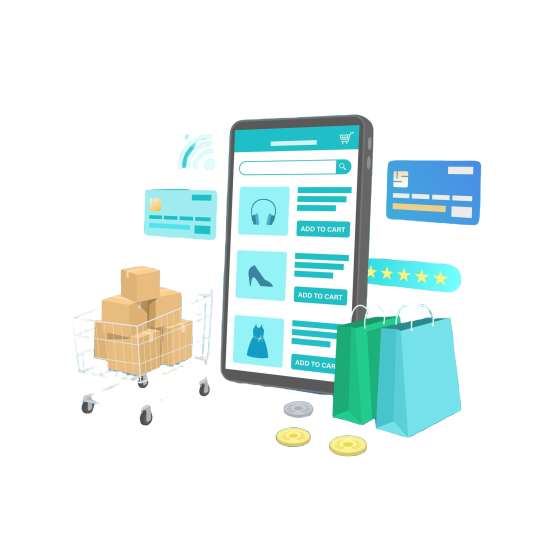
In the world of enterprise-level e-commerce, migrating apps to Shopify has become a critical step for businesses seeking scalability, flexibility, and improved operational efficiency. With Shopify Plus offering a robust platform tailored for high-growth companies, it’s essential to develop a well-executed strategy to ensure a smooth transition. The migration process can be complex, involving data transfers, app compatibility checks, and system integrations, but a carefully planned approach minimizes downtime and ensures continuity of operations.
For executives and decision-makers, understanding the intricacies of migrating apps to Shopify is key to maintaining a competitive edge. This guide provides a detailed, step-by-step look at the migration process, covering everything from pre-migration planning to post-migration optimization, ensuring a successful Shopify app transfer for your business.
Pre-Migration Planning: Setting the Stage for Success
Before diving into the technical aspects of the migration, it’s crucial to plan meticulously. A comprehensive pre-migration strategy can significantly reduce potential risks, like downtime or data loss, that can impact your business.
1. Help Your Current Online E-commerce Marketplace and Apps
A successful migration begins with a thorough assessment of your current e-commerce platform and the apps integrated within it. For enterprise-level businesses, it’s common to have a mix of custom-built solutions and third-party apps that handle critical functions, from inventory management to customer engagement.
Evaluate Compatibility: Review the compatibility of your existing apps with Shopify. While Shopify offers a vast app ecosystem, some legacy or custom-built apps may require custom development or replacements.
Identify Redundancies: Many businesses accumulate multiple apps with overlapping functionalities over time. Assess whether consolidating or eliminating certain apps can streamline your operations.
Determine Essential Features: Identify the essential features your apps provide and ensure that Shopify’s app store or custom solutions can replicate or enhance them.
Expert Insight:
“Many businesses make the mistake of attempting a one-to-one transfer of their existing apps. Instead, take this opportunity to optimize your tech stack and improve efficiencies,” says Jessica Vaughn, CTO of a leading Shopify consultancy.
2. Create a Migration Timeline
Creating a clear migration timeline ensures that all stakeholders are aligned and that any disruptions are minimized. According to a 2023 Gartner report, poorly planned migrations can lead to a 30% drop in productivity, making a timeline crucial for large-scale enterprises.
Key steps in your timeline should include:
Data Backup: Securely backing up all necessary data before beginning the migration process ensures you have a safety net in place.
Testing Phases: Set aside time to test your apps in a sandbox environment to identify any issues before the live migration.
Stakeholder Communication: Keep all relevant teams—technical, marketing, sales, and customer support—updated on the migration status to avoid confusion during the process.
This detailed timeline will not only guide the technical teams but also provide clarity to all stakeholders on when and how the migration will occur.
Step-by-Step Migration Process
With a solid plan in place, the actual migration process can begin. Migrating apps to Shopify involves moving not only the apps but also the data, integrations, and configurations that power your business.
1. Migrating Data and Core Functions
The first step in the Shopify app transfer process is to migrate your core data, which includes customer information, product catalogs, and order history. Data migration is a critical aspect of the process, as the integrity of your customer experience relies on it being accurate and accessible.
Key Steps for Data Migration:
Customer Data: Ensure all customer data, including profiles, purchase history, and communication preferences, are transferred securely.
Inventory Data: Your product catalog and inventory management systems must align with Shopify’s architecture to prevent stock errors or listing discrepancies.
Order Data: Transferring past orders ensures continuity for both internal reporting and customer support queries.
Shopify provides various data import tools, but for highly customized or enterprise-level migrations, Shopify Plus often requires specialized development to ensure that all data transfers accurately.
2. App Compatibility and Customization
After transferring data, it’s time to address app compatibility. Shopify’s app ecosystem is vast, but not all third-party apps or custom-built solutions will fit seamlessly with your new platform. According to a recent Shopify Plus report, 62% of enterprise merchants rely on custom apps or integrations to meet their business needs.
Steps to Ensure App Compatibility:
Review Shopify’s App Store: Identify Shopify-native apps that can replace or supplement your existing functionality.
Custom Development: For apps that don’t have a one-to-one Shopify equivalent, custom development may be required. This can involve working with a Shopify Plus Expert to rebuild or tailor your apps to Shopify’s framework.
Test in Sandbox Environment: Before going live, run a complete test of your newly migrated apps in a sandbox environment to identify any compatibility or performance issues.
Expert Insight:
“App customization is often the most challenging aspect of migration, but it’s also the most crucial,” notes Michael Clark, a Shopify Plus migration consultant. “The goal is not just to deliver apps, but to improve them for Shopify’s powerful surrounding.”
For more information, check out our Complete Guide to Shopify App Transfers, which covers the nuances of app compatibility in detail.

Post-Migration Optimization
The migration itself is only part of the process. Once your apps are live on Shopify, it’s essential to optimize and fine-tune your setup to ensure maximum performance and efficiency.
1. Performance Testing and Monitoring
Once the migration is complete, continuous performance testing is necessary to ensure that the apps and integrations are functioning smoothly under real-world conditions. This is especially important for enterprise-level businesses that experience high traffic and large transaction volumes.
Key Metrics to Monitor:
App Load Times: Ensure that migrated apps load efficiently to maintain a seamless customer experience.
Data Synchronization: Confirm that data flows correctly between Shopify and other systems, such as ERP or CRM integrations.
User Feedback: Collect feedback from both internal teams and customers to identify any pain points post-migration.
2. App Optimization for Growth
After the initial migration, it’s crucial to revisit your app settings and configurations. Shopify’s platform is continuously evolving, and staying updated with new features or app improvements can drive further e-commerce growth.
Steps for Optimization:
Review Shopify Updates: Shopify frequently rolls out updates and new features. Regularly review these updates to identify opportunities for app optimization.
Implement New Integrations: As your business grows, integrating additional Shopify apps or custom-built tools can further streamline operations.
Conduct Regular Audits: Schedule periodic audits to ensure that your apps and integrations remain optimized for performance.
Statistics:
Shopify's Market Share: As of 2023, Shopify holds a significant market share in the e-commerce industry, making it a popular choice for businesses.
Migration Success Rates: While specific data can vary, many businesses have successfully migrated their apps to Shopify, often leading to increased sales and improved user experience.
Time and Cost Savings: Shopify's user-friendly interface and extensive app ecosystem can help reduce the time and cost associated with app development and maintenance.
Conclusion: Unlock the Full Potential of Shopify with a Seamless App Migration
Migrating apps to Shopify is a transformative process that, when executed correctly, can position your business for sustained e-commerce growth. By following a well-structured, step-by-step approach—from pre-migration planning to post-migration optimization—you ensure that your Shopify app transfer goes smoothly, without compromising the integrity of your operations.
At OyeCommerz, we specialize in helping enterprise businesses execute seamless app migrations to Shopify. Our team of Shopify Plus experts ensures that every detail, from data transfer to app customization, is handled professionally and efficiently, allowing you to focus on what matters most—growing your business. Contact OyeCommerz today to start planning your app migration and take full advantage of Shopify’s powerful ecosystem.
0 notes
Text
The Best Free WordPress Plugins You Should Use

If you're running a WordPress website, plugins are essential for adding functionality, improving performance, and optimizing the user experience. At Island Wizards, a company dedicated to providing WordPress headless and Shopify services, we understand the importance of selecting the right plugins for your website. To help you get started, we've compiled a list of the best free WordPress plugins that you should consider for your site.
1. Yoast SEO
Yoast SEO is one of the most popular and comprehensive SEO plugins available. It helps you optimize your content for search engines by providing keyword analysis, readability scores, and detailed SEO suggestions.
Key Features:
Real-time page analysis
XML sitemap generation
On-page optimization for readability and keywords
This plugin ensures that your content is SEO-friendly, which can boost your site's visibility in search engine results pages (SERPs).
2. WPForms
Every website needs a reliable contact form, and WPForms is one of the easiest form builders out there. With its drag-and-drop functionality, you can create beautiful forms in minutes, even if you're not tech-savvy.
Key Features:
Drag-and-drop builder
Mobile responsive
Spam protection
WPForms makes it simple for your visitors to get in touch with you, making it a must-have for businesses like Island Wizards.
3. Elementor
For those looking to design stunning web pages without coding, Elementor is the go-to plugin. This free page builder offers a user-friendly interface that allows you to create custom layouts and designs.
Key Features:
Drag-and-drop editor
100+ templates
Mobile-friendly designs
At Island Wizards, we recommend Elementor for clients who want full control over their website's appearance without relying on custom coding.
4. WooCommerce
If you're running an online store, WooCommerce is the ultimate plugin for e-commerce. It powers more than 30% of all online stores, and it's fully customizable, allowing you to sell anything from physical products to digital downloads.
Key Features:
Built-in payment processing
Inventory management
Customizable product pages
As experts in WordPress and Shopify, we at Island Wizards often integrate WooCommerce for clients looking to build a robust online store.
5. UpdraftPlus
Backing up your website is crucial, and UpdraftPlus simplifies this process. This backup plugin allows you to store your backups in the cloud or download them for safekeeping.
Key Features:
Scheduled backups
Cloud storage integration
Easy restoration
At Island Wizards, we always advise our clients to have a backup strategy, and UpdraftPlus is the perfect solution for that.
6. Smush
Website speed is critical for user experience and SEO, and Smush helps by compressing your images without sacrificing quality. This image optimization plugin reduces file sizes, making your site faster and more efficient.
Key Features:
Lossless image compression
Bulk image optimization
Lazy loading
Faster websites tend to rank higher in search engines, and at Island Wizards, we prioritize performance for all our clients.
7. Wordfence Security
Security is a top priority for any website, and Wordfence provides a comprehensive security plugin to protect your site from malicious attacks.
Key Features:
Firewall and malware scanner
Login security
Real-time threat defense feed
With security being a major concern, we at Island Wizards strongly recommend Wordfence to all our WordPress clients.
Conclusion
Whether you're just starting out with your WordPress site or looking to enhance its functionality, these free plugins are essential tools for success. At Island Wizards, we specialize in WordPress development and can help you integrate these plugins into your site seamlessly. Choosing the right plugins can significantly improve your site's performance, security, and overall user experience, ensuring your website operates at its full potential. Explore more about our service… https://islandwizards.com/blogs/when-you-should-consider-moving-your-store-to-shopify/ https://islandwizards.com/blogs/understanding-the-importance-of-ui-ux-in-website-design/
#shopify#headless wordpress development services#island wizards#wordpress#island wizards uk'#shopify partner program#wizards island#seo#white label agency
2 notes
·
View notes
Text
E-commerce Website Hosting and Management Solutions
With the rise of online shopping and the increasing importance of having a strong online presence, e-commerce websites have become essential for businesses of all sizes. However, building and managing an e-commerce website can be a complex task that requires specialized knowledge and resources. This is where e-commerce website hosting and management solutions come into play, providing businesses with the necessary tools and infrastructure to establish and maintain a successful online store.

Choosing the Right E-commerce Hosting Provider
The first step in setting up an e-commerce website is selecting a reliable hosting provider. A good hosting provider ensures that your website is accessible to visitors, provides fast loading times, and ensures the security of customer data. Here are some factors to consider when choosing an e-commerce hosting provider:
1. Scalability and Performance
Your e-commerce website needs to handle increasing traffic and accommodate growth over time. Look for hosting providers that offer scalable solutions and can handle high volumes of traffic without compromising performance. This ensures that your website remains fast and responsive even during peak shopping seasons or promotional events.
2. Security Measures
Security is crucial for any e-commerce website, as it deals with sensitive customer information such as credit card details. Ensure that the hosting provider offers robust security measures such as SSL certificates, regular backups, and advanced firewalls to protect against cyber threats and data breaches.
3. E-commerce Platform Support
Check if the hosting provider supports the e-commerce platform you intend to use. Popular platforms like Magento, Shopify, WooCommerce, and BigCommerce have specific hosting requirements. Ensure that the provider offers specialized hosting solutions optimized for your chosen platform, as this can significantly enhance the performance and reliability of your website.
4. Customer Support
E-commerce websites need prompt technical support, especially during critical periods. Look for hosting providers that offer 24/7 customer support through various channels like live chat, email, or phone. Responsive customer support can help resolve any issues quickly and minimize downtime, ensuring smooth operations for your online store.
E-commerce Website Management Solutions
Once you have selected a hosting provider, you also need effective website management tools to run your e-commerce store efficiently. Here are some essential features and solutions to consider:
1. Content Management System (CMS)
A robust CMS is essential for managing the content on your e-commerce website. It should allow you to easily update product information, create engaging landing pages, and optimize your website for search engines. Popular CMS options for e-commerce include WordPress, Drupal, and Joomla, each with their own strengths and capabilities.
2. Inventory Management
Efficient inventory management is crucial for e-commerce success. Look for website management solutions that provide inventory tracking, automated stock alerts, and integration with your e-commerce platform. These features help you keep track of stock levels, avoid overselling, and streamline order fulfillment processes.
3. Payment Gateway Integration
Ensure that your website management solution supports integration with popular payment gateways such as PayPal, Stripe, or Authorize.net. Seamless payment processing is vital for providing a smooth customer experience and encouraging online sales.
4. Analytics and Reporting
Tracking and analyzing key metrics is essential for optimizing your e-commerce website’s performance. Look for management solutions that provide detailed analytics and reporting capabilities, allowing you to monitor traffic, conversion rates, customer behavior, and other important insights. This data helps you
make informed decisions to improve your website and drive sales.
5. Mobile Responsiveness
With the increasing use of mobile devices for online shopping, it is crucial to have a mobile-responsive e-commerce website. Your website management solution should offer responsive design templates or customization options to ensure that your online store looks and functions seamlessly across different devices and screen sizes.
Conclusion
E-commerce website hosting and management solutions play a vital role in the success of online businesses. By carefully selecting a reliable hosting provider and implementing effective website management tools, businesses can create a secure, scalable, and high-performing e-commerce store. These solutions empower businesses to focus on their core competencies while leaving the technical aspects of running an online store to the experts, ultimately leading to improved customer experiences, increased sales, and long-term growth.

source
#WebManagement#ServerHosting#WebsiteMaintenance#TechSupport#CloudHosting#DataCenter#ServerManagement#WebHosting#ITInfrastructure#WebsiteSecurity#ServerAdmin#HostingSolutions#WebsitePerformance#ServerMonitoring#WebDevelopment#CloudComputing#NetworkSecurity#DomainRegistration#BackupandRecovery#Cybersecurity
21 notes
·
View notes
Text
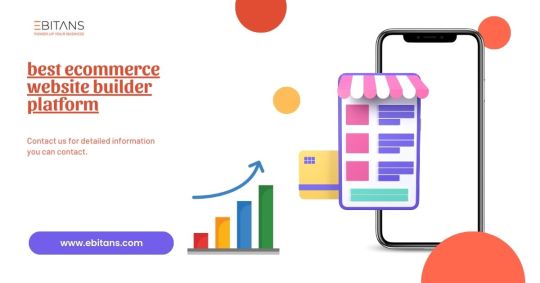
Finding the Best E-Commerce Website Builder for Your Business
Choosing the right e-commerce website builder is crucial for creating a successful online store. With numerous options available, selecting the best platform can significantly impact your business’s growth and efficiency. Here’s a guide to help you find the best e-commerce website builder that suits your needs.
1. Ease of Use
The best e-commerce website builders should offer an intuitive interface that simplifies the process of setting up and managing your store. Look for platforms with user-friendly drag-and-drop editors and customizable templates. These features make it easier to create a professional-looking website without requiring advanced technical skills.
2. Essential Features
Evaluate the core features each builder offers. Key functionalities include product management, secure payment processing, inventory tracking, and shipping options. Advanced features such as SEO tools, marketing integrations, and analytics capabilities can further enhance your online store’s performance.
3. Design Flexibility
A visually appealing and unique online store helps attract and retain customers. Choose a builder that provides a range of customizable templates and design options. This allows you to tailor your site’s appearance to align with your brand’s identity and create a memorable shopping experience.
4. Scalability
As your business grows, your e-commerce platform should be able to scale with you. Opt for a builder that offers flexible plans and additional features to accommodate increased traffic, a larger product range, and expanded functionalities. Scalability ensures your website remains effective and efficient as your business evolves.
5. Support and Resources
Reliable customer support and comprehensive resources are essential for troubleshooting and ongoing management. Select a builder that provides responsive support through various channels, such as live chat, email, or phone. Additionally, access to tutorials, guides, and community forums can be valuable for resolving issues and learning best practices.
Top Recommendations
Shopify: Known for its ease of use and robust feature set, Shopify is ideal for businesses of all sizes. It offers a wide range of customizable templates, integrated payment options, and excellent customer support.
WooCommerce: Perfect for those familiar with WordPress, WooCommerce provides extensive customization and flexibility. It’s suitable for businesses with specific needs and technical capabilities.
BigCommerce: Renowned for its scalability, BigCommerce is a great choice for growing businesses. It offers built-in features for SEO, multi-channel selling, and advanced analytics.
Wix: Wix combines simplicity with design flexibility. Its drag-and-drop editor and diverse templates make creating a visually appealing online store easy.
Squarespace: With its elegant design templates and user-friendly interface, Squarespace is perfect for businesses seeking a stylish and functional online store with minimal effort.
READ MORE >>>>
2 notes
·
View notes
Text

Experience The Best In IT software solutions with Connect Infosoft Technologies 25+yr Experience
All IT Software Services and Solutions :
Full Stack Development
WordPress / Laravel/ PHP Development
Mobile & Web Apps Development
SaaS Application Development
E-commerce / Shopify Plus Development
API Development & Integration
Special Offer: 20% Discount on Team Booking
Get Free Consultation Now
#connectinfosofttechnologies#connectinfosoft#webdesign#saas#mobileapps#webdevelopment#softwareasaservice#appdevelopment#digitalagency#fullstackdevelopment#shopifyplus#ecommerce#softwaredevelopment#itconsultant#itcompany#itindustry#itservices#outsourcing#technology#webdeveloper#softwaredeveloper#appdevelopers#webdevelopmentcompany#webdesigningcompany#saassoftware#usa#india#canada#unitedstates#estonia
3 notes
·
View notes
Text
Custom Web Development Service | Ellocent Labs
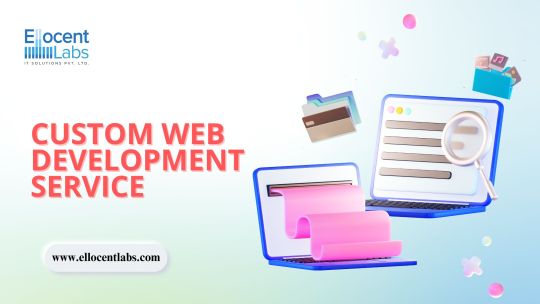
Looking for a reliable custom web development service? Look no further than Ellocent Labs. Our team of experts specializes in creating tailored websites that meet your unique business needs. Contact us today for a seamless and professional web development experience.
In the modern digital landscape, a strong online presence is crucial for any business aiming to thrive and succeed. Custom web development services have become instrumental in creating impactful and tailored solutions that align with a company's unique requirements. Ellocent Labs, a well-known web development company, is known for its expertise in providing high-quality custom web development solutions that empower businesses across industries.
This article will explore the benefits and features of Ellocent Labs' custom web development service and illustrate how it can propel businesses toward digital success.
Tailored Solutions for Optimal Performance:
Ellocent Labs understands that every business is unique, with varying goals and requirements. Their team of skilled developers excels at crafting custom web solutions that provide optimal performance and address specific needs. By conducting in-depth analysis and consultations, Ellocent Labs identifies the key objectives of a business and ensures that their development solutions align with these objectives seamlessly. This tailored approach fosters unparalleled user experiences, increased customer engagement, and enhanced conversions.
Cutting-Edge Technologies:
Ellocent Labs leverages cutting-edge technologies to create custom web solutions that stand the test of time. With expertise in industry-leading frameworks such as Laravel, Angular, ReactJS, and Node.js, they enable businesses to embrace the latest advancements in web development. The implementation of robust technologies ensures that websites are secure, scalable, and future-ready, giving businesses a competitive edge in the digital realm.
Mobile-First Approach:
In an era where mobile devices dominate Internet usage, Ellocent Labs recognizes the importance of a mobile-first approach. Their custom web development service encompasses responsive web design, ensuring that websites flawlessly adapt to various screen sizes and devices. By optimizing user experiences across desktops, tablets, and smartphones, Ellocent Labs helps businesses cater to a wider audience and achieve higher engagement rates.
User-Friendly Content Management Systems:
Ellocent Labs offers seamless integration with user-friendly content management systems (CMS) such as WordPress, Magento, and Shopify. These CMS platforms provide businesses with the flexibility to update and manage their website content effortlessly, without the need for technical expertise. Ellocent Labs' team ensures a smooth transition to the chosen CMS, providing training and ongoing support to maximize its potential.
Continuous Support and Maintenance:
Ellocent Labs' commitment to client satisfaction extends beyond the development phase. Their custom web development service includes continuous support and maintenance, aimed at ensuring optimal website performance and security in the long run. Regular updates, bug fixes, and security patches guarantee that websites remain functional, secure, and up-to-date, providing businesses with peace of mind.
Conclusion:
Ellocent Labs' custom web development service is a quintessential asset for businesses seeking a robust online presence. With a focus on tailored solutions, cutting-edge technologies, mobile-first approaches, user-friendly CMS integration, and ongoing support, Ellocent Labs enables businesses to harness the full potential of the digital landscape. By choosing Ellocent Labs as their web development partner, businesses can unlock unlimited possibilities and propel themselves toward digital success.
#softwaredevelopmentcompany#softwaredevelopmentcompanychandigarh#bestsoftwaredevelopmentcompany#marketing#softwareengineering#aiandml#seocompany#artificialintelligence#programming#artificialintelligenceappdevelopment#customwebdevelopmentservice
2 notes
·
View notes
Text
Google Ads Campaign Management || Google Analytics & GTM Specialist
It's great to hear about your extensive experience in digital marketing and the wide range of services you offer, including Google Ads, Google Analytics GA4, and Tag Manager services. Your expertise in these areas can be extremely valuable to small business owners and start-ups looking to establish a strong online presence. Here's a summary of your services: **Google Ads Management Services**: - Google Ads Campaign Setup - Advanced Keyword Research - Google PPC Ads Extension Setup - Conversion Tracking & Analytics Setup - Audience Optimization and Budget Setup - Comprehensive Optimization Strategies - Campaign Strategy Reports **Google Analytics 4 & Google Tag Manager Services**: - Google Analytics (GA4) Setup - Google Tag Manager (GTM) Setup - Goals Cross-Domain & Events Tracking - Form, E-commerce, and Purchase Tracking - Custom Audience & Remarketing - Social Ads Conversion Tracking Setup - Google Ads Conversions Tracking - Website Interaction Tracking - Custom Reports and Filters - Pixel Installation for Remarketing Tags - Integration with Various Pixels (e.g., Hotjar, Facebook, Twitter, Pinterest, LinkedIn) **Facebook Services**: - Facebook Pixel Installation - Google Tag Manager Setup for Facebook - Facebook Conversion API Setup - Server-Side Tracking - Domain Verification - iOS 14 Update Compliance - Shopify Facebook Pixel Tracking - E-commerce Conversion Tracking - Aggregated Event Measurement - GA4 Measurement ID Installation **GTM Server-Side Tracking Services**: - Server-Side Tracking for Various Platforms and Pixels You work with a variety of website platforms, including WordPress WooCommerce, Shopify, Wix, ClickFunnels, Laravel/PHP, and custom websites, making your services adaptable to different clients' needs. It's also nice to know a bit about your personal life and interests. Your pursuit of a Master's Degree in Digital Marketing demonstrates your commitment to staying up-to-date in the field. And as a cat lover and traveler, you bring a personal touch to your professional profile. Your comprehensive range of services and your commitment to ongoing education make you a valuable asset in the digital marketing industry. I wish you the best of luck in your endeavors, and I hope your skills continue to benefit your clients and your academic pursuits. Best Regards! #digitalmarketingagency #spotify #wordpress #tracking #beauty #portrait #teenage #googleads
#google tag manager#baby animals#facebook ads#facebook pixel#google analytics#google ads#puppies#kittens#kitty#maia arson crimew
2 notes
·
View notes